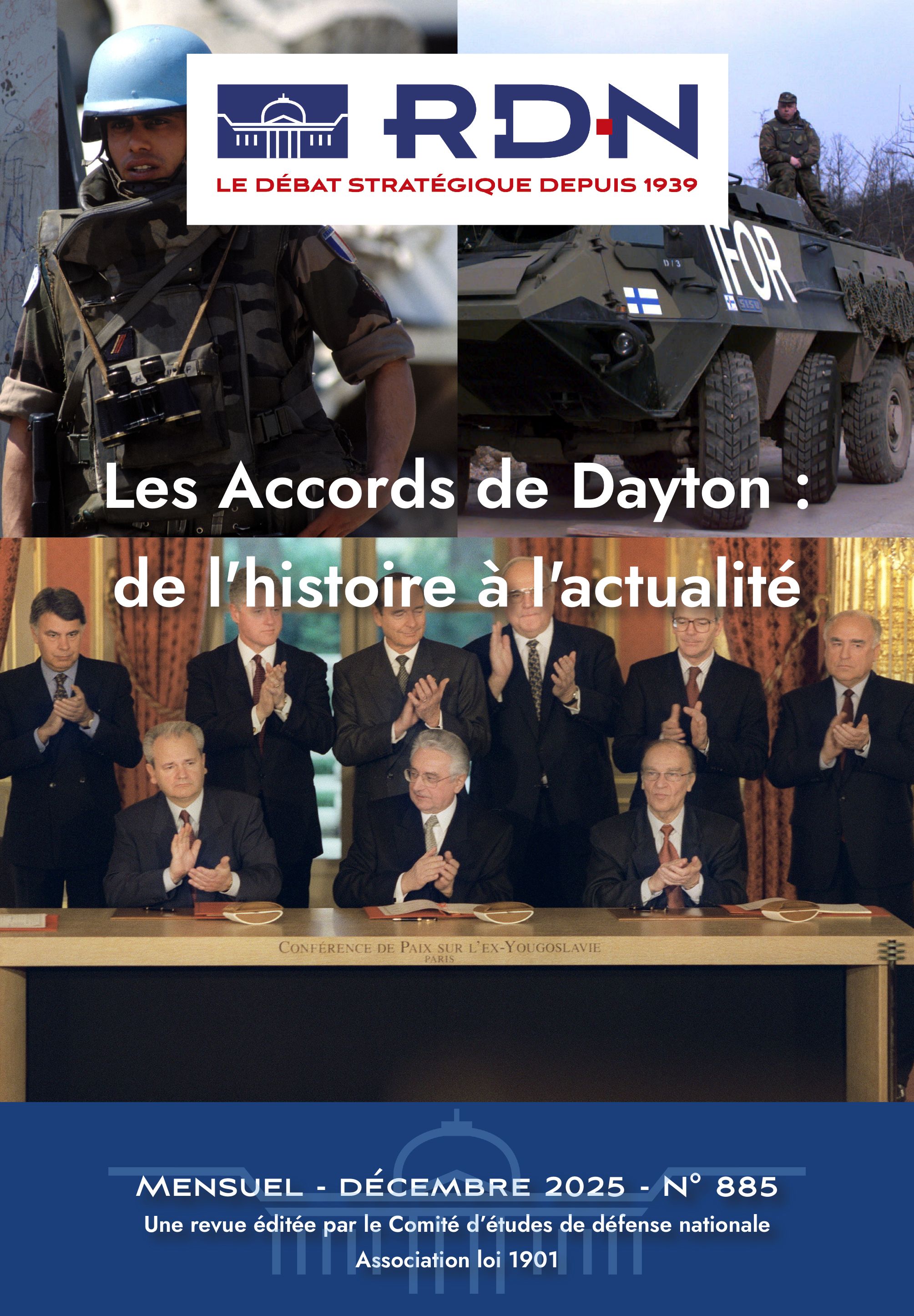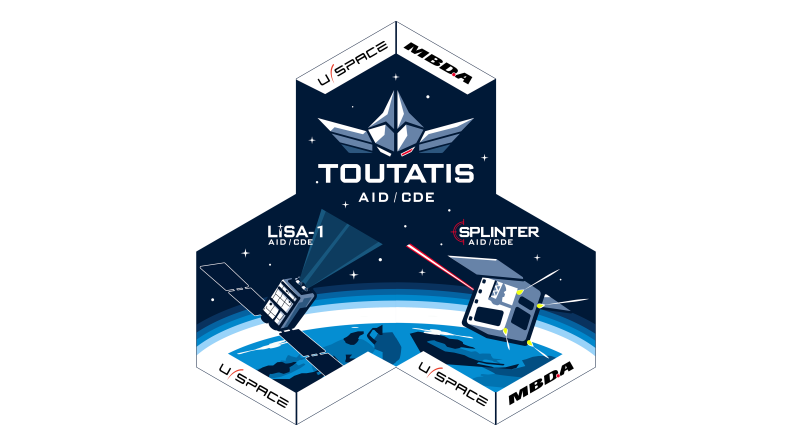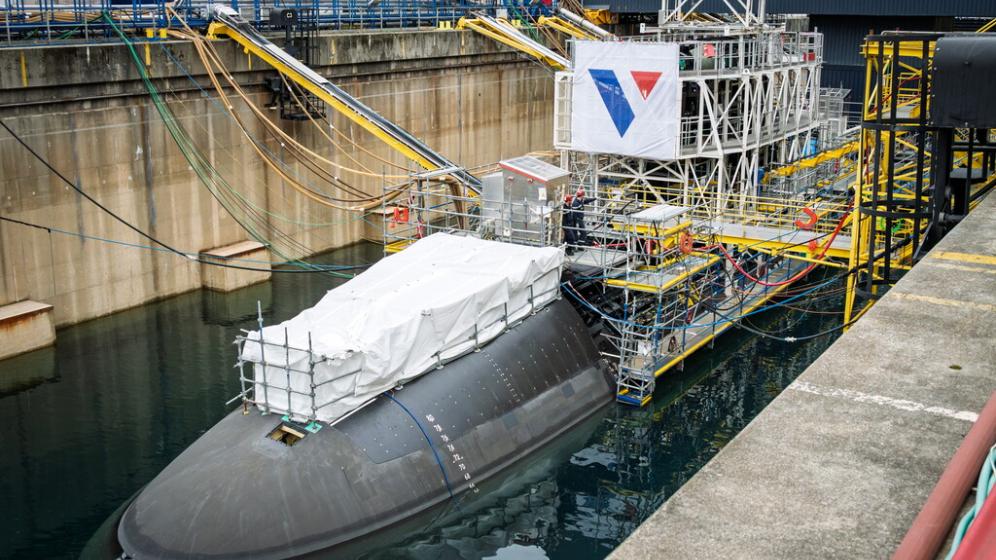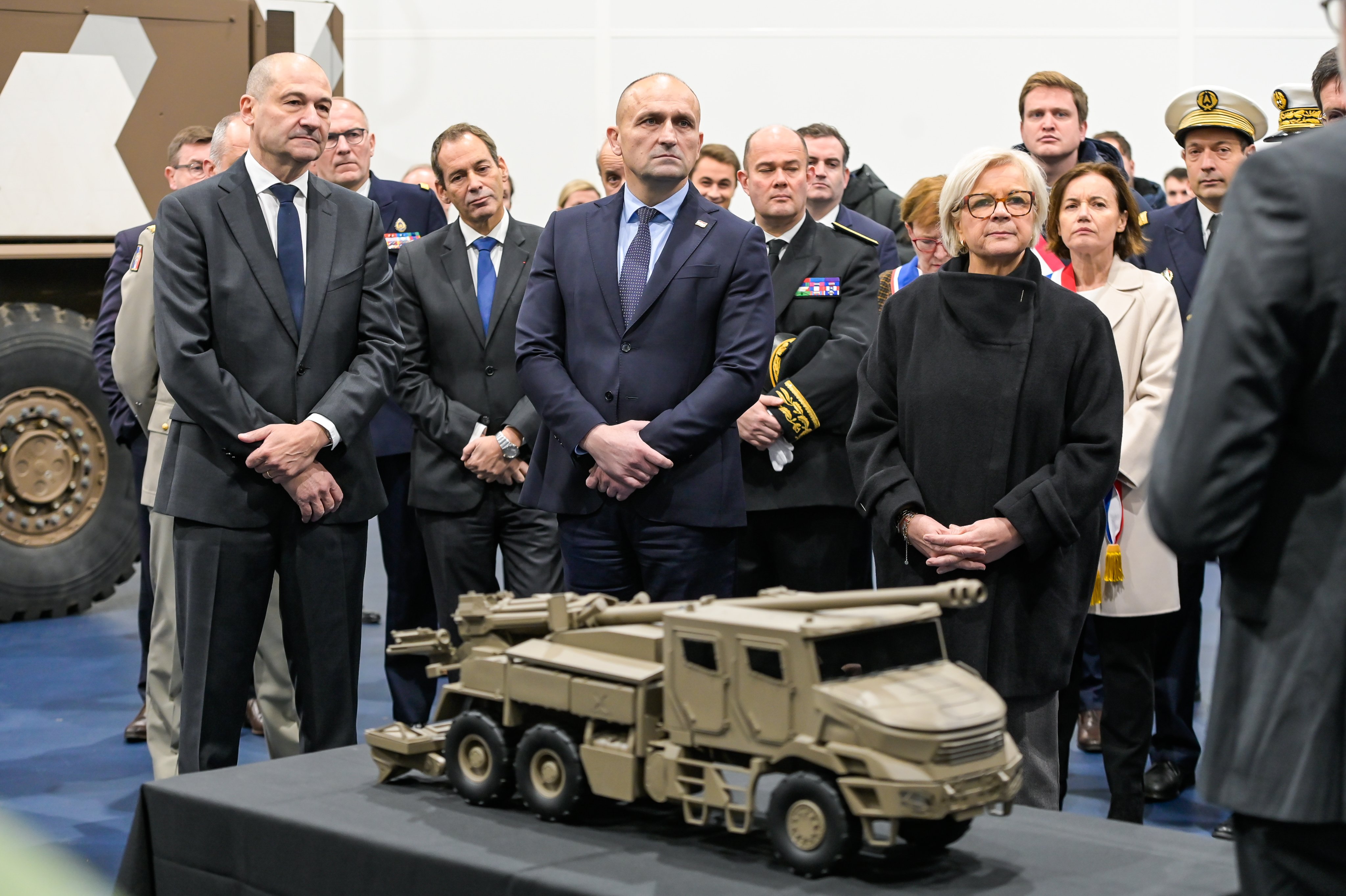Not enough or far too much—the format of combat aviation has always been at the heart of public debate, one which reflects its importance for our defence as much as it does the pressing need to adapt it to the new threats if it is to remain credible. Hidden behind the headline numbers of aircraft is a set of far less obvious, though equally crucial variables to take into account for holding our place in the world.
Formatting Combat Aviation for the Air and Space Force: a Complex Equation with Many Variables
Finding the right format for combat aviation is an esoteric exercise: many arguments compete in the search of a subtle balance between political ambitions regarding defence and security, operational credibility, support for exports and budgetary sustainability.
Although combat aviation can have many objectives (including defence, attack and intelligence), one of the major operational functions demanded of it is the achievement of air superiority, even if locally and temporary, in order to deliver effects in various domains and environments for its own account or that of other components. Air superiority nevertheless faces danger from two sources:
– Externally, from new threats which employ A2/AD (Anti-Access/Area Denial) strategies and from new-generation aircraft that challenge its freedom of action.
– Internally, from periodic challenges, questioning its real value in terms of power, its format and even its very existence, in favour of remotely-controlled aircraft.
In a remarkable visionary analysis in 2021 the French Institute of International Relations (Institut français des relations internationales—Ifri) drew attention to the risks of an unrelenting attrition of the mass of our high-tech military effectors, were they to be involved in a hypothetical high-intensity engagement, starting with combat aviation.(1) That was in June of 2021, eight months before the return of war to the marches of Europe. Hollowed out by decades of cuts despite an increased number of operations over the past 30 years, the Air and Space Force’s (Armée de l’Air et de l’Espace—AAE) target for multi-role combat aircraft was cut by 25 per cent between 2008 and 2017 alone, a significant reduction in its organic and operational depth. This weakness is still with us, and the Ukrainian conflict is a reminder of the serious consequences it could have.
It is worth remembering that combat aviation is most often the initial intervention means of choice for political leaders; it is vital that it is reactive to ever more rapidly evolving threats, and yet deciding its appropriate format is far more complex than a simple analysis of the number of its effectors.
The Place of Combat Aviation in the Supreme Commander’s Options
Combat aviation is, and will remain, the backbone of air power, a strategic tool in the hands of the statesmen. Let us be quite clear about this: air power is used for the primary intervention in any large-scale military operation. The reactivity and intensity of air power brought to bear by its combat aircraft makes possible the achievement of decisive air superiority anywhere, even on the other side of the world, whilst retaining the unique degree of reversibility of such value to the political level. This value has been underlined time and time again over the past thirty years: the 1991 Gulf War (Desert Storm), Kosovo in 1999 (Operation Allied Force), Afghanistan from 2001, Libya in 2011 (Harmattan), Mali in 2013 (Serval, then Barkhane), operations against Daesh from 2014 (Inherent Resolve) and the retaliation raid in 2018 against Syrian chemical arms programme sites (Hamilton)(2) to speak only of French activity.
The choice of combat aviation as a military weapon with a strong political dimension was further endorsed by the Chief of the Armed Forces during his speech to the forces on 20 January 2023 at the air base at Mont-de-Marsan. The President of the Republic expressed his desire to ensure that France should be able to build and command a first-rate coalition.(3) Moreover, the President specifically wished to favour coherence in mass and reactivity without sacrificing endurance.(4) Two lessons of significance can be drawn from these two precepts. On one hand, although it is not the only factor involved, the coherence and weight of combat aviation is determinant in a country’s military credibility within a coalition of Western air forces, especially when coalition leadership is assigned. The most recent coalitions, Desert Storm and Inherent Resolve are clear demonstrations of this. On the other hand, they highlight the difficulty and demands of defining a credible format.
The war in Ukraine is also a stark reminder of the vital role played by French combat aviation in strategic dialogue. We have seen the return of high-intensity warfare and of nuclear posturing—two areas in which combat aviation offers a response to the political decision maker. Initial analysis of a balance of power shows that without sufficient quality and coordination, quantity alone cannot guarantee air superiority. Proof is in the nine-to-one ratio in favour of the Russians, who also had a significant technological advantage.
Format vis-à-vis a New Strategic Dialogue and a Continually Evolving Threat
In his 2021 strategic plan,(5) the Armed Forces Chief of Staff outlined the changed patterns of today’s world. The change from the traditional pattern of escalation, peace-crisis-war, to the current competition–contest–confrontation, is compelling us to adapt our strategic vision of these new forms of conflict.
To make this transition, the AAE has established a number of principles which are set out in General Mille’s 2022 strategic vision:(6) reactivity, agility, multi-tasking and credibility, related to the maxim of conquer through the third dimension: deter, defend and dismantle. Combat aviation is playing its part in these three pillars. Deterrence remains the military effect initially sought. The principal asset for achieving this is the Airborne nuclear component (Composante nucléaire aéroportée—CNA), maintained unfailingly since 1964 by the Strategic air forces (Forces aériennes stratégiques—FAS). The CNA must remain strong, credible and permanent, whatever the circumstances. The second pillar is defence. Combat aviation participates in the permanent air security posture (Posture permanente de sûreté aérienne—PPS-A) through its mission of operational permanence. Our aircraft are constantly ready to take off to offer assistance and protect our citizens. Finally, for dismantling [an opposing force] it is essential to have a robust, reliable and coherent combat organisation. Combat aircraft are the keystone of our institution and need to be equipped and ready for combat at all times and in all places. The latest demonstration of this was Pégase, a large-scale power projection manoeuvre in the Pacific in the summer of 2022. It once again(7) demonstrated our capability to project front-line air forces to New Caledonia in under 72 hours, as well as our interoperability with our principal allies.
This strategic transformation has been made in line with current and future threats. The characteristic of ground-based air defence systems, in particular those based on Europe’s Eastern flank, is not so much in their modernity as their mobility in order to optimise their lethality and survivability. What is more, these systems have significant fields of fire which compel combat aircraft to use weapons of greater range. For the current air-to-air threat, dangers from fifth-generation stealth aircraft are gradually becoming the priority. By 2035, Integrated Air Defence Systems (IADS)(8) and Low Observable/Very Low Observable (LO/VLO) aircraft will have proliferated and become the main threat. They will progressively be accompanied by Remote Carrier, Loyal Wingman or other unmanned combat air vehicles (UCAV), whose aim is to saturate the enemy and confront manned aircraft with a capability for detection and lethality.
To face these threats we are developing new capabilities for our combat aviation. A new standard of Rafale (F5) is being prepared for 2030 and beyond, which will have improved capability for detection of new stealth threats, together with a complete SEAD (Suppression of Enemy Air Defences) capability for combating modern IADS. In the future we will also see increased cooperation and the Future Air Combat System (Système de combat aérien du futur—SCAF) programme.
Despite the strategic, operational and capability changes to our combat aviation to bring it into line with new strategic conditions and threats, its format has never been so slim(9)—quite the contrary of our competitors’ aircraft fleets.
Slim Format and Few Personnel: Training is the Key
The format is too often approached from the point of view of the number of aircraft alone. Balancing aircraft, crews and training is a complex equation, and each of these factors merits study to reach an objective solution.
The main dilemma to resolve in studying combat aviation is the balance between technology and overall mass (masse brute).[10] The resultant of increasing costs of development, production and maintenance in operational condition of our materiel would appear to follow Norman R. Augustine’s law.[11] Proof is in General Philippe Steininger’s analysis, where he reminds us that the average unit cost of a combat aircraft has in real terms increased five-fold in fifty years.[12] At the same time, technology has allowed the effective and rapid achievement of military effects in modern conflict with drastically reduced collateral damage and numbers of aircraft needed. It has redefined the concept of concentration and mass through the use, for example, of precision-guided munitions. For a given effect the necessary mass is reduced: it is a measure of effectiveness.
The use of technology is a basic element of deterrence. As already mentioned, deterrence is the fundamental pillar of our forces and is tailored to our need.[13] The airborne nuclear component requires state-of-the-art aircraft and armament to remain credible, offsetting just the right number of effectors needed for the mission. It therefore favours technology over mass. Moreover, our deterrent must by definition remain sovereign and independent. It is therefore essential that we support our defence industrial and technological base (DITB) to continue this mission. Which is why, in rationalising our combat aircraft model around a single effector for the deterrent mission, we are able to reduce development, production, ownership, instruction and training costs. In the decade following 2030, Rafale will be our sole combat aircraft for conducting all missions. It is evolutionary by design and has been modernised as threats have evolved. The F3R standard will from this year give way to the new F4 standard which has better connectivity in particular. Nevertheless, the evolution from F4 onwards will highlight differences between older Rafale versions, which will not all be able to receive the complete functionality of that standard. These differences will enable us to optimise our format between ‘top-end’ Rafale for high-intensity and permanent missions (technology) and the others, which will satisfy needs for crisis management and training (mass).
Once the model has been studied we can determine the number of aircraft necessary. To do this it is essential to take account of the operational tasking assigned to our combat aviation. Its format will therefore allow us to:
– conduct permanent deterrent and territorial defence missions entirely independently;
– conduct high-intensity missions without putting strain on the permanent missions;
– respond to crisis management missions in uncontested environments, and
– train our armed forces.
Faced with this requirement, a format of 185 multi-role Rafale is essential, and is the model endorsed for the current (2019-2025) Military programming law.
This number must nevertheless allow for peace time losses,[14] and in particular anticipate those in a potential future high-intensity conflict. Among other things it will determine our ability to sustain a conflict. In modern wars involving Western countries the attrition rate has been from 0.05 per cent (Desert Storm in 1991) to 0.02 per cent (Iraqi Freedom in 2003).[15] It is important to see these apparently low figures in the context of future high-intensity commitments. It is reasonable to think that the attrition rate in a future high-intensity conflict might be in the order of 1 to 3 per cent, especially when confronting adversaries who benefit from a far more dynamic export market than was the case in the past. In addition, it should be remembered that attrition affects not only aircraft but also crews. Regarding combat aircraft, the President of the Republic and the Minister for the Armed Forces have initiated studies with industry, the Directorate General for Armament (Direction générale de l’armement—DGA) and the armed forces to prepare a policy for a war economy. This strategy will lead to reducing production times to an absolute minimum. The increased production of the artillery vehicle, Caesar, prompted by the Ukrainian conflict, is a perfect illustration of this. Silence often reigns over the loss of aircrew. Some 5 years are needed to train an operational combat pilot on Rafale after having had optimised training on the new PC-21 Pilatus. Loss of aircrew has heavy consequences on the long term ability to conduct a mission. To alleviate this, we maintain reserve crews among Headquarters Staffs, who continue to train regularly in a combat squadron. They may be employed at any time to fill a shortage of aircrew during a conflict. In these days of competition and contest, the Air and Space Force gives great importance to this reserve of personnel, which will serve as the backstop of the forces.
Since this attrition is not currently taken into account in the format, we need to study ways to minimise it and, if needed, to replace losses. Training is one of the principal ways. The level of quality of our crews must remain high if we are to use our capabilities to their best, and to achieve this the AAE has increased the number of high-intensity exercises. It holds an annual exercise called Volfa (Vols forces aériennes ≈ Air forces’ flights) which brings together our and our principal allies’ airmen for a number of complex scenarios. In addition, at the beginning of this year our aircraft took part in the joint exercise Orion,[16] which was the first step in a triennial cycle of modern conflict scenarios ordered by the armed forces’ Central Staff to boost operational preparedness. The 2026 edition of Orion will have an ‘air’ flavour, where that in 2023 was more land-based. Moreover, to improve training, emphasis has been put on simulation. It is currently conducted in several simulation centres which will be interconnected in the future. Eventually, using Live Virtual Constructive Training (LVC-T),[17] the virtual and real worlds will exist side by side. This advance in simulation offers added value to increasing further the level of our crews’ performance and compensating for the deficit in aircraft numbers.
Conclusion
To conclude, in terms of the missions assigned to combat aviation we are today at a historically low level both of aircraft and crews. Our combat sustainability remains limited, shaped by a future war economy and by manipulation of personnel numbers. Despite that, the quality of our crews that has been acquired through training and decades of operations permits us to compensate in part for our current format. That training must not be reduced in any way. The format remains a complex equation whose solution is a function of strategic ambitions for power, yet also of its limits. The equation is continually reworked in order to arrive at a resilient and efficient model. So it is that, in the development of Scaf, it will be reworked yet again to take into account the advent of Remote Carrier and Loyal Wingman. ♦
(1) Briant Raphaël, Florant Jean-Baptiste and Pesqueur Michel, La masse dans les armées françaises : un défi pour la haute intensité [Mass in the French armed forces: a stake in high intensity], Focus stratégique, No 105, Ifri, June 2021, 80 pages (https://www.ifri.org/).
(2) Moyal Éric, Operation Hamilton…Strategic Demonstration and Air Power, RDN2 special edition for the 2019 Paris Air Show, Air and Space—Challenges for French Sovereignty and Freedom of Action, in English at pp. 47-52 and at https://www.defnat.com/.
(3) Macron Emmanuel, Discours du président de la République aux Armées [The President’s speech to the armed forces], 20 January 2023 (https://www.elysee.fr/front/pdf/elysee-module-20711-fr.pdf).
(4) Ibidem.
(5) Burkhard Thierry, Vision stratégique du chef d’état-major des Armées [The strategic vision of the Armed Forces Chief of Staff], October 2021 (https://www.defense.gouv.fr/).
(6) Mille Stéphane, Vision stratégique de l’AAE [The strategic vision of the Air and Space Force] 2022 (https://www.defense.gouv.fr/).
(7) Editor’s note: Heifara-Wakea was held a year earlier on the same principle but to French Polynesia, then Hawaii.
(8) Combination of captors and effectors (ground-air and/or air-air systems) networked together in order to protect an area from the air threat.
(9) 1960, 700 combat aircraft; 1990, 450 aircraft; 2020, 185 aircraft. Steininger Philippe, Les fondamentaux de la puissance aérienne moderne [The fundamentals of modern air power], L’Harmattan, 2020.
(10) Overall mass (Masse brute): represents the permanent capabilities of a system of forces, which in particular allow the generation and support of one or more operational masses. Operational mass (Masse opérationnelle): is the concentration in a given period of time of the combat strength of a force; i.e., the sum of all its resources of destruction or disruption applied to achieving operational effects. Lt Col Briant Raphaël, Laboratory for defence research at Ifri.
(11) Augustine Norman R., Augustine’s Laws, American Institute of Aeronautics, New York, 1982. At the end of the 1990s, the former president of Lockheed Martin, Norman R. Augustine, developed a law according to which the rise in costs of procurement and ownership of combat aircraft would be such that the United States would be reduced to possessing a single aeroplane by 2050.
(12) Steininger Philippe, op. cit.
(13) In a speech by the President of the Republic on defence and deterrent strategy at the French war college on 7 February 2020 (https://www.elysee.fr/).
(14) In 16 years in service, has lost only one Rafale.
(15) Attrition in combat is generally expressed as a percentage giving the number of losses per 100 air sorties.
(16) Opération d’envergure pour des armées résilientes, interopérables, orientées vers la haute intensité, et novatrices. Loosely: Broad-ranging operation for resilient and interoperable forces focusing on high-intensity and innovation. (!)
(17) Using tactical data links, this simulation allows the inclusion of simulated objects during real operations. In this way LVC can make a scenario more dense or complex, thus enriching the quality of real training.







